Snowden News Through 2017
Updates from vineyard, barrel, table, bottle, glass, family
2017
Scott, Randy and Diana
 2017 to 2018
2017 to 2018
 Some things we appreciate about the very odd year we’re just completing –-
Some things we appreciate about the very odd year we’re just completing –-
-- All of us Snowdens, not just the three of us who post here, thank all of you who are supporting our mission to produce naturally-grown, family made, site-specific, Napa Valley wines in a classic style from the ranch where we have been privileged to tend the vineyards since 1955.
-- We are grateful the ranch was unharmed by the fall fires. The photo is a reminder – a burned leaf found  lying on the ground in the middle of our Brothers Vineyard on October 21, a few days after the last blaze in the valley was extinguished.
lying on the ground in the middle of our Brothers Vineyard on October 21, a few days after the last blaze in the valley was extinguished.
-- A special thanks to all of you who have helped us with your input this past year – through our member survey, your emails, and visits.
Best wishes for the New Year.
 Randy -- December 17, 2017
Randy -- December 17, 2017
Beautiful Fall Colors
Every fall we walk through all of our vineyards inspecting each vine. There are 21,000 vines growing in our 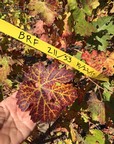 eleven acre Brothers Vineyard. This year, we spotted exactly twenty-five that we’re worried about. The lovely, deep purple colors that you see in the valley’s most photogenic vineyards are less appreciated by the winegrower because those colors usually mean the vines have a virus. These aren’t people viruses, they’re plant viruses, some of which can weaken grapevines and affect wine quality. The vine in the photo has “Leafroll 3,” sometimes called “Red Leaf,” which is a serious enough thing that we’ll need to remove the vine this winter and replace it with a new, virus-free vine. Even after consulting with viticultural experts from the University of California at Davis, we’re not certain about many of the vines we’ve flagged this time around. The next step will be to take cuttings from each vine and send them to a lab for analysis – the last thing we want to do is remove a healthy grapevine by mistake.
eleven acre Brothers Vineyard. This year, we spotted exactly twenty-five that we’re worried about. The lovely, deep purple colors that you see in the valley’s most photogenic vineyards are less appreciated by the winegrower because those colors usually mean the vines have a virus. These aren’t people viruses, they’re plant viruses, some of which can weaken grapevines and affect wine quality. The vine in the photo has “Leafroll 3,” sometimes called “Red Leaf,” which is a serious enough thing that we’ll need to remove the vine this winter and replace it with a new, virus-free vine. Even after consulting with viticultural experts from the University of California at Davis, we’re not certain about many of the vines we’ve flagged this time around. The next step will be to take cuttings from each vine and send them to a lab for analysis – the last thing we want to do is remove a healthy grapevine by mistake.
 Scott -- November 15, 2017
Scott -- November 15, 2017
Jon Bonné on the 2014 Ranch Cabernet Sauvignon
Check out Jon Bonné’s article running in the online Punch magazine – “The Current State of California Cabernet.” He says “... California cabernet has evolved in the past few years, or, more precisely, revisited a classic style of earlier years, when savory and herbaceous characteristics were admired ...” The first wine on 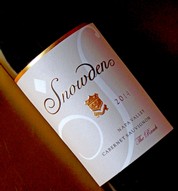 Bonné’s list of suggested California cabernets in a classic style? 2014 Snowden Cabernet Sauvignon “The Ranch:”
Bonné’s list of suggested California cabernets in a classic style? 2014 Snowden Cabernet Sauvignon “The Ranch:”
“It’s always surprising the Snowden wines tend to fly under the radar; the Snowden family (and its property in the eastern hills of Rutherford) are Napa denizens, and the wines are made by Diana Snowden Seysses, who, when not cabernet-ing it is in Burgundy as cellar master for Morey-Saint-Denis’ well-known Domaine Dujac, which is owned by her husband’s family. This is the Snowdens’ mainline cabernet, and once it gets some air, it finds a perfect balance between heft (it’s pushing 15% alcohol) and subtlety, with fresh and quiet fruit flavors, dried leaves and smokiness, plus a silken aspect to the often rugged cabernet tannins, which is Snowden Seysses’ trademark – a Burgundian eye on a very non-Burgundian grape.”
Look for the article (and a lot of other interesting stuff) at: https://punchdrink.com/articles/guide-current-era-california-cabernet-sauvignon-wine/.
 Diana -- November 12, 2017
Diana -- November 12, 2017
Migrating Our Cabernet Franc
There is nothing more important than establishing a vineyard properly. Here are our guys (Srs. Maldonado,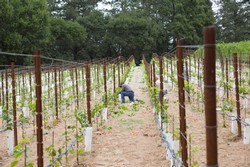 Velazaquez, and Deloera) training our new block of Cabernet Franc up the stake -- establishing trunk and height of the fruiting zone for the rest of what we hope and expect will be a long life! Cabernet Franc is one of my favorite grape varieties. A few more years of patience and we'll be producing it again.
Velazaquez, and Deloera) training our new block of Cabernet Franc up the stake -- establishing trunk and height of the fruiting zone for the rest of what we hope and expect will be a long life! Cabernet Franc is one of my favorite grape varieties. A few more years of patience and we'll be producing it again.
 Randy -- November 2, 2017
Randy -- November 2, 2017
This Very Unusual Fall
We Snowdens have emerged from the unreal north coast fires safely -- people, pets, homes, ranch, grapes, wines were all unharmed. One unanticipated benefit of making wines in a more traditional style is that we don't leave fruit out in the vineyard late into the harvest season to boost sugars and resulting alcohols -- so, all of our grapes were in the tank before the fires broke out, eliminating smoke issues. We ferment and barrel age our wines at the lovely little Fantesca Winery on Spring Mountain, where the power was out for two days during the fires. Their extremely capable crew were unfazed, "pumping over" our fermenters with five gallon buckets carried up the ladders and poured over the caps. We are all feeling extremely fortunate, particularly when we look at our many friends and neighbors here and over the hill in Sonoma County who did not fare as well. Even before the fires broke out, the 2017 harvest was a weird one. The heat ... incident ... on September 1 and 2 ended what had been a reasonably predictable growing year. The 2017s may be terrific or they may not be -- the bottom line is that we've never experienced a heat interruption like this fall, so are learning as we go along. In the meantime, stay tuned, as we're about to offer the amazing 2015 Cabernets to members of our wine club and mailing list on a pre-release basis. Or, feel free to dive deeper into the 2014s, currently being poured at two three-stars in the USA.
 Randy -- October 10, 2017
Randy -- October 10, 2017
We're Still Here -- Napa Valley Fires
So far, the ranch is unburned and most of our fruit was in the cellar before the fires hit Napa Valley Sunday night. Scott and his family in St. Helena are safe and right now -- St. Helena isn't considered under any immediate threat. Janet, pets and I evacuated our home in northeast Napa early Sunday morning and, while we don't know when we'll be allowed to return, our house did not burn. Thanks to everyone who has been reaching out. More as soon as we can.
 Scott -- June 13, 2017
Scott -- June 13, 2017
Sauvignon Blanc Release
We are very excited – today we’re releasing the 2016 Sauvignon Blanc “Sunninghill.” Always our first new wine each calendar year, we only have a single acre of Sauvignon Blanc vines. They’re located in the middle of the Lost Orchard Vineyard at the east end of the property, nestled in between Cabernet Sauvignon on both sides. At 800 feet of elevation, this may not be exactly mountain fruit, but it’s definitely hill fruit. At the back edge of the vineyard, the hill drops off steeply into Conn Valley. As the crow flies easterly, there’s Lake Hennessey and then Pritchard Hill rises up on the far side, perhaps a mile and a half from our place. In 2016, we harvested on August 23 – there were 2.3 tons of fruit, which came in at 21.7º brix. We pressed whole cluster, which means putting the fruit directly into the press without first running it through a destemmer or crusher. The juice was fermented to dryness in three old French oak barrels, four stainless steel barrels, and one new French Mercurey barrel. The resulting wine did not go through malolactic fermentation and was barrel aged for eight months sur lies, then bottled unfiltered on April 20. We are delighted with the wine – an unapologetic Sauvignon Blanc that balances fruit and a refreshing acidity with the minerality that hints quietly at the base of most all Snowden wines. The 2016 is remarkable for its consistency with the several preceding vintages – perhaps a little more generous with fruit, like in 2013 and 2015, as compared to the 2012 and 2014. But these variations are subtle – as always, this is Sauvignon Blanc in a classic style.
the Lost Orchard Vineyard at the east end of the property, nestled in between Cabernet Sauvignon on both sides. At 800 feet of elevation, this may not be exactly mountain fruit, but it’s definitely hill fruit. At the back edge of the vineyard, the hill drops off steeply into Conn Valley. As the crow flies easterly, there’s Lake Hennessey and then Pritchard Hill rises up on the far side, perhaps a mile and a half from our place. In 2016, we harvested on August 23 – there were 2.3 tons of fruit, which came in at 21.7º brix. We pressed whole cluster, which means putting the fruit directly into the press without first running it through a destemmer or crusher. The juice was fermented to dryness in three old French oak barrels, four stainless steel barrels, and one new French Mercurey barrel. The resulting wine did not go through malolactic fermentation and was barrel aged for eight months sur lies, then bottled unfiltered on April 20. We are delighted with the wine – an unapologetic Sauvignon Blanc that balances fruit and a refreshing acidity with the minerality that hints quietly at the base of most all Snowden wines. The 2016 is remarkable for its consistency with the several preceding vintages – perhaps a little more generous with fruit, like in 2013 and 2015, as compared to the 2012 and 2014. But these variations are subtle – as always, this is Sauvignon Blanc in a classic style.
 Randy -- April 6, 2017
Randy -- April 6, 2017
Fastenting Seat Belts ...
If there’s any one thing that feels like the start for the growing year, it’s budbreak. The buds are just little shiny dark beads at the joints between cane segments through the winter. Come spring, the cracks begin to open and what looks like a powdery white fuzz forms at the microscopic edges. Then the inner bud begins to swell into a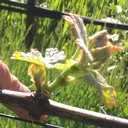 tiny, brown man-bun. Real budbreak is when this enlarges and begins to unfurl tiny green leaves. The thing that’s amazing is how much is programmed into these tiny, dynamic structures – this year’s shoots, leaves and grape clusters – and over the next few weeks we'll be forming what will become next year’s crop, as well. Budbreak began in earnest for us around March 22 – a good ten days later than in 2016. While there’s been variation between blocks, we’re happy to see even bud development across the vines in the individual blocks. It’s a little early to declare 2017 the vintage of the century, but so far, so good.
tiny, brown man-bun. Real budbreak is when this enlarges and begins to unfurl tiny green leaves. The thing that’s amazing is how much is programmed into these tiny, dynamic structures – this year’s shoots, leaves and grape clusters – and over the next few weeks we'll be forming what will become next year’s crop, as well. Budbreak began in earnest for us around March 22 – a good ten days later than in 2016. While there’s been variation between blocks, we’re happy to see even bud development across the vines in the individual blocks. It’s a little early to declare 2017 the vintage of the century, but so far, so good.
 Scott -- February 19, 2017
Scott -- February 19, 2017
Bunkering Down -- And Starting to Think About Pruning
It has been raining and raining. We’re deeply sorry for anyone who is suffering damage, but otherwise, 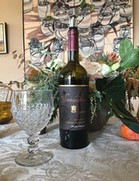 we’re ecstatic. Nature is recharging the vines, fields, and woodlands, which can only be good for the wildlife, plants, and wines growing on the property. The problem with years of drought is the insidious transition, as the vines move from health to challenge, and then have to reprioritize, putting survival ahead of crop.
we’re ecstatic. Nature is recharging the vines, fields, and woodlands, which can only be good for the wildlife, plants, and wines growing on the property. The problem with years of drought is the insidious transition, as the vines move from health to challenge, and then have to reprioritize, putting survival ahead of crop.  Yes, we do appreciate the character that sometimes comes out of those vintages, but we also dread the knife-edge farming that drought years require, as the vines lose their ability to fight off virus and finally turn their backs on their fruit. We pamper our vines with attention, but, in normal years, not with water and nutrients. For our drier, hillside setting this means they are challenged in the best of years. It’s so early in the season, but so far, this is good. As we bunker down in the storms, we like to drink some wine ... let’s see ... how about some Brothers Vineyard Cabernet Sauvignon? And back on pampering the vineyards –- over the past few weeks we’ve inspected most of the 22,000 vines in the eleven acre Brothers Vineyard. The photo on the left is of a vine in row 158 that looks like it had some girdling – that’s constriction – in one of its growing canes last year. It’s not a big problem because it’s wood that will be cut off to let the vine regrow for the new year. But it helps us to know what happened – we learn, change our pruning and tying practices, and will check next winter to see if we’ve improved.
Yes, we do appreciate the character that sometimes comes out of those vintages, but we also dread the knife-edge farming that drought years require, as the vines lose their ability to fight off virus and finally turn their backs on their fruit. We pamper our vines with attention, but, in normal years, not with water and nutrients. For our drier, hillside setting this means they are challenged in the best of years. It’s so early in the season, but so far, this is good. As we bunker down in the storms, we like to drink some wine ... let’s see ... how about some Brothers Vineyard Cabernet Sauvignon? And back on pampering the vineyards –- over the past few weeks we’ve inspected most of the 22,000 vines in the eleven acre Brothers Vineyard. The photo on the left is of a vine in row 158 that looks like it had some girdling – that’s constriction – in one of its growing canes last year. It’s not a big problem because it’s wood that will be cut off to let the vine regrow for the new year. But it helps us to know what happened – we learn, change our pruning and tying practices, and will check next winter to see if we’ve improved.
 Randy -- January 17, 2017
Randy -- January 17, 2017
Some Wine Writers Weigh In -- Winter in the Vineyards
We make our wines to express site, variety, and vintage. To do that faithfully means letting each vintage of each wine reveal itself, without our engineering the wine to meet a defined style or profile. The process of 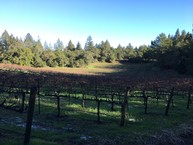 discovering each wine is the satisfaction for us, even though it means our wines tend to move in and out of the “sweet spot” for many of the top wine writers. So, we’ve learned not to let our sun rise and fall based on what a particular writer thinks. That said, it’s always a pleasure when a famous wine writer has something nice to say about our wines. Both Robert Parker and Antonio Galloni have recently reviewed our current releases. Writing in the Wine Advocate, Mr. Parker remarks on the ’14 Brothers “impressive purity” and its “long, full-bodied and silky” finish; the ’14 Ranch is “a beauty” with a “voluptuous texture;” and he mentions the “wonderful floral notes” in the ’14 Petit Verdot. Writing in Vinous, Mr. Galloni sums up the Petit Verdot as “absolutely delicious;” he called The Ranch “gorgeous ... dark, racy and expressive” and – we really agree with this – “one of the best values readers will find in Napa Valley Cabernet Sauvignon.” As to The Brothers, he mentions “balance and harmony,” and says the wine is “vivid, nuanced and deeply expressive” with a “beguiling interplay of expressive aromatics and rich fruit.” (You can check out their full reviews on their respective websites.) Meanwhile, we’re getting deep pleasure out of this uncomfortable winter. It continues cold and wet here in the Napa Valley. The photo is a recent 40 degree afternoon in our Lost Orchard Vineyard.
discovering each wine is the satisfaction for us, even though it means our wines tend to move in and out of the “sweet spot” for many of the top wine writers. So, we’ve learned not to let our sun rise and fall based on what a particular writer thinks. That said, it’s always a pleasure when a famous wine writer has something nice to say about our wines. Both Robert Parker and Antonio Galloni have recently reviewed our current releases. Writing in the Wine Advocate, Mr. Parker remarks on the ’14 Brothers “impressive purity” and its “long, full-bodied and silky” finish; the ’14 Ranch is “a beauty” with a “voluptuous texture;” and he mentions the “wonderful floral notes” in the ’14 Petit Verdot. Writing in Vinous, Mr. Galloni sums up the Petit Verdot as “absolutely delicious;” he called The Ranch “gorgeous ... dark, racy and expressive” and – we really agree with this – “one of the best values readers will find in Napa Valley Cabernet Sauvignon.” As to The Brothers, he mentions “balance and harmony,” and says the wine is “vivid, nuanced and deeply expressive” with a “beguiling interplay of expressive aromatics and rich fruit.” (You can check out their full reviews on their respective websites.) Meanwhile, we’re getting deep pleasure out of this uncomfortable winter. It continues cold and wet here in the Napa Valley. The photo is a recent 40 degree afternoon in our Lost Orchard Vineyard.
2016
 Randy -- December 11, 2016
Randy -- December 11, 2016
Fall Wrap-Up -- Holiday Gifts -- And an Amazing Wine Book
Starting with the last first, in case you haven't already seen Kelli White's huge and masterful book,  "Napa Valley Then and Now" -- it's one of the most comprehensive, insightful, and well-researched books on Napa Valley wines, winemakers, and terroir to come out in living memory. And with six pages devoted to Snowden, it's won our hearts. If you're stumped on a present for your wine-loving friend, this book is perfect. In other news, ranch manager Severiano Deloera has successfully "put the vines to bed" for the winter. The photo is from late November and, for the second year, early rains and a hundred tons of biodynamic compost have jump-started the cover crops -- different blends for different blocks, depending on their needs. Between the rains, we've also had some very cold nights, which we like because they tell the vines to take some well-deserved time off. If there's anything like a "down time" at the ranch, it's the next six
"Napa Valley Then and Now" -- it's one of the most comprehensive, insightful, and well-researched books on Napa Valley wines, winemakers, and terroir to come out in living memory. And with six pages devoted to Snowden, it's won our hearts. If you're stumped on a present for your wine-loving friend, this book is perfect. In other news, ranch manager Severiano Deloera has successfully "put the vines to bed" for the winter. The photo is from late November and, for the second year, early rains and a hundred tons of biodynamic compost have jump-started the cover crops -- different blends for different blocks, depending on their needs. Between the rains, we've also had some very cold nights, which we like because they tell the vines to take some well-deserved time off. If there's anything like a "down time" at the ranch, it's the next six 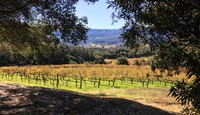 weeks, until we start walking the vineyards to talk about pruning. In the meantime, besides Kelli's book, give your wine friends a bunch of Snowden wines. For the holidays, we've added some gift pack options to our website -- attractively packaged, with personalized note cards and, in lieu of the usual member discount, free shipping.
weeks, until we start walking the vineyards to talk about pruning. In the meantime, besides Kelli's book, give your wine friends a bunch of Snowden wines. For the holidays, we've added some gift pack options to our website -- attractively packaged, with personalized note cards and, in lieu of the usual member discount, free shipping.
 Scott -- November 30, 2016
Scott -- November 30, 2016
Henry Standing Bear's Choice in Cabernet Sauvignon
As avid readers of Craig Johnson's beguiling Longmire novels -- and watchers of the accompanying television series --  we Snowdens were delighted to discover that Henry Standing Bear has marvelous taste in wine. In the newest novel, "An Obvious Fact," out this fall, Walt Longmire, sheriff of Wyoming's Absaroka County, enounters his old friend Mr. Standing Bear enjoying a glass of Snowden Cabernet Sauvignon. Anyone who has read the novels will understand why this is particularly gratifying, as Mr. Standing Bear is particularly discerning in pretty much all things. In other news, please accept our apologies for being distracted from our news page for much of this fall. With harvest complete and most of the new red wines through malolactic fermentation, we intend to turn our attention back to talking about ourselves.
we Snowdens were delighted to discover that Henry Standing Bear has marvelous taste in wine. In the newest novel, "An Obvious Fact," out this fall, Walt Longmire, sheriff of Wyoming's Absaroka County, enounters his old friend Mr. Standing Bear enjoying a glass of Snowden Cabernet Sauvignon. Anyone who has read the novels will understand why this is particularly gratifying, as Mr. Standing Bear is particularly discerning in pretty much all things. In other news, please accept our apologies for being distracted from our news page for much of this fall. With harvest complete and most of the new red wines through malolactic fermentation, we intend to turn our attention back to talking about ourselves.
 Randy -- September 21, 2016
Randy -- September 21, 2016
Harvest Update
With the early budbreak this past spring, it looked like we were heading to our earliest harvest ever – until 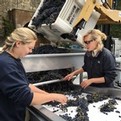 the middle of August, when we were surprised by a long run of foggy mornings and moderate afternoon temperatures. You couldn’t prescribe better weather for producers who care about site specificity – suddenly we were given time for flavors and tannins to mature in the field without running sugar levels through the roof. We probably scored an additional two weeks on the vine and most of our blocks have been coming in a week or more later than last year. We started harvest on August 23 with the Sauvignon Blanc – personally crushed by our winemaker, Diana Seysses. Our Merlot was picked on September 10, the Brothers Vineyard fruit came in on September 11 and 18, Los Ricos on the 13th, and the Lost Orchard and Lower Vineyards on the 18th. Our only fruit still on the vine is the Petit Verdot, which should come in by this time
the middle of August, when we were surprised by a long run of foggy mornings and moderate afternoon temperatures. You couldn’t prescribe better weather for producers who care about site specificity – suddenly we were given time for flavors and tannins to mature in the field without running sugar levels through the roof. We probably scored an additional two weeks on the vine and most of our blocks have been coming in a week or more later than last year. We started harvest on August 23 with the Sauvignon Blanc – personally crushed by our winemaker, Diana Seysses. Our Merlot was picked on September 10, the Brothers Vineyard fruit came in on September 11 and 18, Los Ricos on the 13th, and the Lost Orchard and Lower Vineyards on the 18th. Our only fruit still on the vine is the Petit Verdot, which should come in by this time 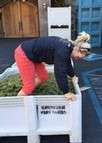 next week. As soon as it’s in the cellar, Diana will be heading home to Burgundy, where the Pinot Noir harvest will just be getting underway.
next week. As soon as it’s in the cellar, Diana will be heading home to Burgundy, where the Pinot Noir harvest will just be getting underway.
 Scott -- September 20, 2016
Scott -- September 20, 2016
Our New Favorite Nightime Activity -- Picking Grapes
The accepted moment of the day to start picking grapes has been backing up for 20 years. For generations, it was 6 in the morning, or as soon after as there was enough natural light. Or later for winemakers who wanted warm fruit to jet start fermentation. Then the sparkling wine producers began starting earlier. 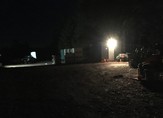 A few years ago, it started teasing back for still wine picks to 5 or even 4 o’clock. Then just last year, when it looked like we’d be picking into a hot morning, the crew suggested starting at 3. It worked out well. So, we tried midnight picks – cool fruit, comfortable working conditions, grapes queued up at the crusher first-thing-in-the-morning. This fall, most of our picks have started at 9 in the evening. The crew begins trickling in around 7:30, music wafts out of a car window, and as the sun goes down there’s the comforting sound of the curved knives being sharpened on wet hand stones with surgical precision. Then the tiny tractors, with their fiesty growls as they move the bins into position for the first grapes. There are lights on the tractors, but the work is really performed by headlamp. These are talented, extremely hard-working professionals who take great, and deserved, pride in their work through the season that brings the grapes to the crusher. You know it’s going well when the head lamps are moving quickly, the bins are filling with clean, perfect fruit ... and, in the darkness, someone begins to sing.
A few years ago, it started teasing back for still wine picks to 5 or even 4 o’clock. Then just last year, when it looked like we’d be picking into a hot morning, the crew suggested starting at 3. It worked out well. So, we tried midnight picks – cool fruit, comfortable working conditions, grapes queued up at the crusher first-thing-in-the-morning. This fall, most of our picks have started at 9 in the evening. The crew begins trickling in around 7:30, music wafts out of a car window, and as the sun goes down there’s the comforting sound of the curved knives being sharpened on wet hand stones with surgical precision. Then the tiny tractors, with their fiesty growls as they move the bins into position for the first grapes. There are lights on the tractors, but the work is really performed by headlamp. These are talented, extremely hard-working professionals who take great, and deserved, pride in their work through the season that brings the grapes to the crusher. You know it’s going well when the head lamps are moving quickly, the bins are filling with clean, perfect fruit ... and, in the darkness, someone begins to sing.
 Randy -- July 18, 2016
Randy -- July 18, 2016
New Wines -- Veraison -- And Other News
It's less than two months until our fall releases – we’ll be introducing our first reds from the 2014 vintage: the Cabernet Sauvignon "Brothers Vineyard" and the Petit Verdot. We’re also planning to release a 2013 Cabernet Franc (blended with a touch of Merlot). Our 2015 Malbec Rose will continue to be available and will be joined by the 2015 Sauvignon Blanc. We weren't able to bottle a vineyard designated Cabernet from the Los Ricos Vineyard from the 2014 vintage -- but do have a 2015 Los Ricos in barrel. Meanwhile, spurred by a run of warm days at the end of June, a few of our 16 vineyard blocks are starting to show some color in the berries -- 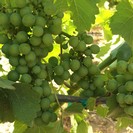 veraison. While most of the blocks are still uniformly green, some early harbingers are not unusual. Overall, we seem to be on a similar (earlish) timeline as last year. One definite plus is the current run of weather -- cool and cloudy until around 11 in the morning, when the clouds break up, giving way to balmy, mild warmth for the rest of the day. This should slow things down a bit and give the grapes additional time on the vine without driving up sugar levels. One of the more interesting questions at the start of each growing season is, "who will control the gophers this year?'' The question is important because the healthiest vineyards are usually the ones like ours, farmed "no-till" and without using any herbicides. Which also describes a friendly environment for gophers. This year, we do not have many gophers, but haven't figured out who to thank. Over the past decade, there were two years when the gopher control was coyotes; two years of mountain lions; three years of Bobcats; and one year of foxes. Since we haven't spotted any of these in the vineyard, we're guessing this year it may be owls.
veraison. While most of the blocks are still uniformly green, some early harbingers are not unusual. Overall, we seem to be on a similar (earlish) timeline as last year. One definite plus is the current run of weather -- cool and cloudy until around 11 in the morning, when the clouds break up, giving way to balmy, mild warmth for the rest of the day. This should slow things down a bit and give the grapes additional time on the vine without driving up sugar levels. One of the more interesting questions at the start of each growing season is, "who will control the gophers this year?'' The question is important because the healthiest vineyards are usually the ones like ours, farmed "no-till" and without using any herbicides. Which also describes a friendly environment for gophers. This year, we do not have many gophers, but haven't figured out who to thank. Over the past decade, there were two years when the gopher control was coyotes; two years of mountain lions; three years of Bobcats; and one year of foxes. Since we haven't spotted any of these in the vineyard, we're guessing this year it may be owls.
 Scott -- May 22, 2016
Scott -- May 22, 2016
Meanwhile, Back in the Vineyards
There’s so much going on going on in the vineyards right now. Bloom got off to a desultory start about ten days ago, but then the temperature shot to just over 90°F on the 16th and the 17th. By the 18th, all of the vineyards were approaching 100% bloom. The fragrance is lovely. The brief heat was a good thing – a long slow bloom can result in grapes at harvest with differences of two weeks or more in maturity. The mini-heat spell snapped the vineyards into a lockstep like we haven’t seen in several years. We had a little rain yesterday, but so far not enough to wash away pollination. In a couple of weeks we’ll know how many of the berry positions have pollinated – called “set.” That’s the moment when we learn what kind of crop we’ll be tending for the next four months. Overall, the
days ago, but then the temperature shot to just over 90°F on the 16th and the 17th. By the 18th, all of the vineyards were approaching 100% bloom. The fragrance is lovely. The brief heat was a good thing – a long slow bloom can result in grapes at harvest with differences of two weeks or more in maturity. The mini-heat spell snapped the vineyards into a lockstep like we haven’t seen in several years. We had a little rain yesterday, but so far not enough to wash away pollination. In a couple of weeks we’ll know how many of the berry positions have pollinated – called “set.” That’s the moment when we learn what kind of crop we’ll be tending for the next four months. Overall, the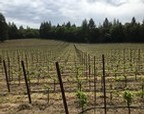 vineyards look particularly good this spring. For starters, the vines clearly appreciate the normal rainfall of the winter. Bud break was early again this year but, unlike in the previous two (drought) years, this year the shoots came out more uniformly. And a lot more quickly. In early April, it seemed every vineyard in the Napa Valley needed to be shoot thinned. That’s now done, and we’re on to moving the trellis wires in the cane pruned blocks and shoot positioning – manually moving each fruiting shoot to where we want it and securing it there with a small support clipped to the trellis. As soon as the berries reach pea-size, we’ll “top,” which involves clipping the tips off of any shoots that are more than about 36” long. At this point in the season, each of the approximately 40,000
vineyards look particularly good this spring. For starters, the vines clearly appreciate the normal rainfall of the winter. Bud break was early again this year but, unlike in the previous two (drought) years, this year the shoots came out more uniformly. And a lot more quickly. In early April, it seemed every vineyard in the Napa Valley needed to be shoot thinned. That’s now done, and we’re on to moving the trellis wires in the cane pruned blocks and shoot positioning – manually moving each fruiting shoot to where we want it and securing it there with a small support clipped to the trellis. As soon as the berries reach pea-size, we’ll “top,” which involves clipping the tips off of any shoots that are more than about 36” long. At this point in the season, each of the approximately 40,000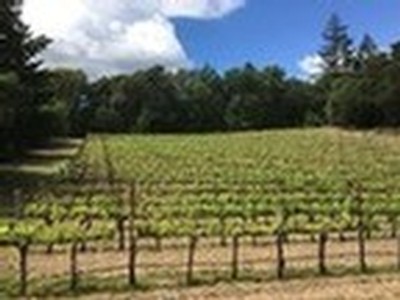 vines at the ranch has been visited by a human being at least 12 times. When the senior Snowdens first came to the property in 1955, the number of visits would have been 3, rather than 12. And, back then there were a lot fewer vines, because the spacing in those days was around 100 square feet per vine, compared to current spacing of as little as 20 square feet per vine. Why so much more attention to the vines? It’s entirely about quality. Across the Napa Valley, and doubtless across every other fine wine growing area on earth, there is a relentless push toward growing the highest quality grapes possible. The only way to do that is to have highly skilled vineyard workers paying close attention to each individual vine at every critical moment during the growing
vines at the ranch has been visited by a human being at least 12 times. When the senior Snowdens first came to the property in 1955, the number of visits would have been 3, rather than 12. And, back then there were a lot fewer vines, because the spacing in those days was around 100 square feet per vine, compared to current spacing of as little as 20 square feet per vine. Why so much more attention to the vines? It’s entirely about quality. Across the Napa Valley, and doubtless across every other fine wine growing area on earth, there is a relentless push toward growing the highest quality grapes possible. The only way to do that is to have highly skilled vineyard workers paying close attention to each individual vine at every critical moment during the growing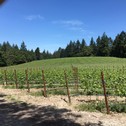 season.
season.
 Randy -- May 20, 2016
Randy -- May 20, 2016
Bottling 2016
The winegrowing year is punctuated with terror. 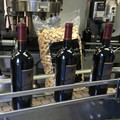 Early bud break? Frost? Can we keep up with shoot thinning? With positioning? Should we pick? Is the crew available? Is there fermenter room in the cellar? One of these counter-intuitive ... challenging moments ... is bottling. It’s scheduled months in advance, the variables are known -- so just work through the checklist and get the job done. Right? The problem is hard to define, but involves (1) bottling today is a science – the equipment is so sophisticated that small producers use “mobile” bottlers who arrive at their doorstep in a truck packed with cutting edge equipment which few can afford to
Early bud break? Frost? Can we keep up with shoot thinning? With positioning? Should we pick? Is the crew available? Is there fermenter room in the cellar? One of these counter-intuitive ... challenging moments ... is bottling. It’s scheduled months in advance, the variables are known -- so just work through the checklist and get the job done. Right? The problem is hard to define, but involves (1) bottling today is a science – the equipment is so sophisticated that small producers use “mobile” bottlers who arrive at their doorstep in a truck packed with cutting edge equipment which few can afford to purchase for themselves. (2) Those trucks, which fully fitted-out can cost $1 million or more, are scheduled in the late fall for the next calendar year. Which means, the date is the date. If you miss it, you may not get another for months. (3) Meanwhile, the producer is running final lab tests on the wines; applying for approval of proposed labels from the regulatory agencies; ordering corks from Portugal, with specific quality, cut, length, and graphics burned on the sides; having the approved labels run by printers whose presses are scheduled 24 hours a day, months in advance; commissioning foils from Spain; ordering glass blown and shipped from wherever it's coming from, which means it has to pass smoothly through the ship-rail-truck transportation matrix from some direction or another. And don’t forget the extra workers – we provide nine people on bottling day, which is a trick, as we have exactly one full time employee, who has been so busy in the vineyard each spring, he has never been able to participate in bottling day, at least so far, in the 23 years he has been managing our vineyards. That will explain the photo of our winemaker, Diana Seysses,
purchase for themselves. (2) Those trucks, which fully fitted-out can cost $1 million or more, are scheduled in the late fall for the next calendar year. Which means, the date is the date. If you miss it, you may not get another for months. (3) Meanwhile, the producer is running final lab tests on the wines; applying for approval of proposed labels from the regulatory agencies; ordering corks from Portugal, with specific quality, cut, length, and graphics burned on the sides; having the approved labels run by printers whose presses are scheduled 24 hours a day, months in advance; commissioning foils from Spain; ordering glass blown and shipped from wherever it's coming from, which means it has to pass smoothly through the ship-rail-truck transportation matrix from some direction or another. And don’t forget the extra workers – we provide nine people on bottling day, which is a trick, as we have exactly one full time employee, who has been so busy in the vineyard each spring, he has never been able to participate in bottling day, at least so far, in the 23 years he has been managing our vineyards. That will explain the photo of our winemaker, Diana Seysses, working the front end of the bottling line last month.
working the front end of the bottling line last month.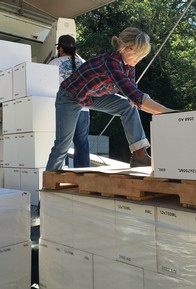 Almost every year, notwithstanding the terror, bottling is a great success. In many ways, it’s an analogy to the larger winegrowing process – drill down with mind-numbing care on every detail you can think of – and then stand back and let the whole thing flourish. Like a vineyard. Or a wine.
Almost every year, notwithstanding the terror, bottling is a great success. In many ways, it’s an analogy to the larger winegrowing process – drill down with mind-numbing care on every detail you can think of – and then stand back and let the whole thing flourish. Like a vineyard. Or a wine.
 Scott -- March 22, 2016
Scott -- March 22, 2016
Rain -- Budbreak -- Direct Shipping to Massachusetts
We're delighted to have just received approval to ship wine directly to customers residing in 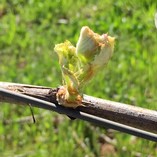 Massachusetts. Almost all of our fall releases have sold out as far as commercial distribution goes, but we've held back small amounts for continued direct sales, so it's not too late for Massachusettsians to order. In other news, we've received a good amount of rain in the past couple of weeks, putting us slightly ahead of normal for the first time in several years. This is a very good thing, as it means the vines won't bunker down in drought stress this summer. And, another early budbreak is underway -- the photo is from our one acre Petit Verdot block, which is among the earliest on the ranch. (The bud is a little over 1/4" high.) The early start to the growing season adds several additional considerations into the already complex equation of grapegrowing, including a longer frost season, higher risk of rain during bloom, and the possibility of more "hang time" before sugars reach the harvest threshold. As we've said before, at budbreak, the ultimate wines are perfect -- now our job is to keep it that way.
Massachusetts. Almost all of our fall releases have sold out as far as commercial distribution goes, but we've held back small amounts for continued direct sales, so it's not too late for Massachusettsians to order. In other news, we've received a good amount of rain in the past couple of weeks, putting us slightly ahead of normal for the first time in several years. This is a very good thing, as it means the vines won't bunker down in drought stress this summer. And, another early budbreak is underway -- the photo is from our one acre Petit Verdot block, which is among the earliest on the ranch. (The bud is a little over 1/4" high.) The early start to the growing season adds several additional considerations into the already complex equation of grapegrowing, including a longer frost season, higher risk of rain during bloom, and the possibility of more "hang time" before sugars reach the harvest threshold. As we've said before, at budbreak, the ultimate wines are perfect -- now our job is to keep it that way.
 Randy -- February 10, 2016
Randy -- February 10, 2016
Variety -- Vintage -- Terroir
Many of you have heard us say that Diana makes our wines with the goal of delivering the grape, the location, and the vintage into the glass. She practices what’s sometimes called “non-invasive” or “non-interventionist” winemaking. In many ways, it’s more difficult than “invasive” or “interventionist” winemaking, where wines are tightly controlled to produce a uniform, engineered product. With non-invasive 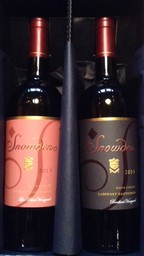 winemaking, the winemaker has to be especially vigilant, keeping track of what’s going on in tank and barrel; and ready to respond quickly and subtly when the unexpected occurs. But barring the unexpected, we crush grapes and let them become wines – Diana doesn’t add yeast, instead relying on the wild yeasts floating around the vineyards and the cellar; she doesn’t add sugar to offset cooler growing seasons; she doesn’t add enzymes to digest the skins, or acid to offset warmer growing seasons; she lets the wines ferment until they’re dry and doesn’t add sugar back to soften them or cover over more nuanced flavors. The intended results of all this non-intervention are wines that differ between different growing years; wines that display the character of their grape variety; and wines that have flavors and aromas unique to their specific growing sites – their terroir. In 2013 we produced the perfect illustration of terroir: just compare our two vineyard-designated 2013 Cabernet Sauvignons: the “Brothers Vineyard” and the “Los Ricos Vineyard.” Both wines were made by the same winemaker using the same winemaking techniques. Both grew in vineyard blocks on our property in light, volcanic, rhyolite soils. One difference: the Brothers is 98% Cabernet Sauvignon and 2% Petit Verdot, whereas the Los Ricos is 100% Cabernet Sauvignon. But the real difference is terroir. The Brothers Vineyard is at 800 to 850 feet of elevation with a generally southern and western exposure. The Los Ricos Vineyard lies about a half mile west at 600 to 650 feet of elevation, with a generally eastern exposure. Try tasting these two wines side-by-side to see how exciting the differences of terroir can be.
winemaking, the winemaker has to be especially vigilant, keeping track of what’s going on in tank and barrel; and ready to respond quickly and subtly when the unexpected occurs. But barring the unexpected, we crush grapes and let them become wines – Diana doesn’t add yeast, instead relying on the wild yeasts floating around the vineyards and the cellar; she doesn’t add sugar to offset cooler growing seasons; she doesn’t add enzymes to digest the skins, or acid to offset warmer growing seasons; she lets the wines ferment until they’re dry and doesn’t add sugar back to soften them or cover over more nuanced flavors. The intended results of all this non-intervention are wines that differ between different growing years; wines that display the character of their grape variety; and wines that have flavors and aromas unique to their specific growing sites – their terroir. In 2013 we produced the perfect illustration of terroir: just compare our two vineyard-designated 2013 Cabernet Sauvignons: the “Brothers Vineyard” and the “Los Ricos Vineyard.” Both wines were made by the same winemaker using the same winemaking techniques. Both grew in vineyard blocks on our property in light, volcanic, rhyolite soils. One difference: the Brothers is 98% Cabernet Sauvignon and 2% Petit Verdot, whereas the Los Ricos is 100% Cabernet Sauvignon. But the real difference is terroir. The Brothers Vineyard is at 800 to 850 feet of elevation with a generally southern and western exposure. The Los Ricos Vineyard lies about a half mile west at 600 to 650 feet of elevation, with a generally eastern exposure. Try tasting these two wines side-by-side to see how exciting the differences of terroir can be.
 Scott -- January 29, 2016
Scott -- January 29, 2016
Happy New Year! Vintage 2016! Snowden in Ontario!
Once again we're closely following the roll-out of the upcoming vintage. Rain is foremost in our minds at this early juncture, and like the rest of the Napa Valley grower community, we're ever so cautiously optimistic. So far this season's precipitation is about an inch less than average, but we're continuing to see rain in the forecast. And, it's been "good" rain, arriving in modest amounts over longer periods, so a lot of it is soaking in rather than just running off. We also "enjoyed" a hard freeze in December, which means, unlike last 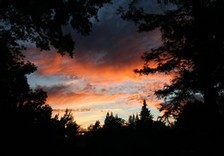 year, the vines got a decisive message to shut down for the winter. Plus, one thing about a winter with real weather is the frequent occurrence of drop-dead gorgeous sunsets and sunrises. Ranch manager Severiano Deloera began pruning about ten days ago. Once again, he's working with just three very experienced people who consult frequently as they move through the blocks. In other news, we're pleased our wines are once again available in Ontario -- which joins Japan, Quebec, Denmark, Sweden, and England as places outside the United States where our wines are sold.
year, the vines got a decisive message to shut down for the winter. Plus, one thing about a winter with real weather is the frequent occurrence of drop-dead gorgeous sunsets and sunrises. Ranch manager Severiano Deloera began pruning about ten days ago. Once again, he's working with just three very experienced people who consult frequently as they move through the blocks. In other news, we're pleased our wines are once again available in Ontario -- which joins Japan, Quebec, Denmark, Sweden, and England as places outside the United States where our wines are sold.
2015
 Diana -- November 12, 2015
Diana -- November 12, 2015
From the Department of Pleasant Surprises
Many of you remember the earthquake that rolled through the Napa Valley in August of 2014? This note 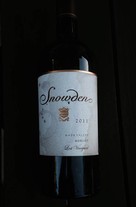 came in a couple of weeks ago – a rare silver lining story from a very challenging time. “Here’s a shot of a bottle of your 2011 Merlot that took a swan dive and gathered with all the other wines on the floor of our office cellar when the earthquake hit last year. Notice the wine stains. Beyond the shakeup, the temperature of the room was cranked up by the space heater our landlord brought in to dry out the floor of wine and water. Last week I came across the bottle and took it home. I've always thought this wine was very well balanced – and even after the abuse this poor bottle suffered, it was beautiful. Graceful, charming, very well balanced and delicious.” We don’t recommend this aging protocol, but are really pleased it worked.
came in a couple of weeks ago – a rare silver lining story from a very challenging time. “Here’s a shot of a bottle of your 2011 Merlot that took a swan dive and gathered with all the other wines on the floor of our office cellar when the earthquake hit last year. Notice the wine stains. Beyond the shakeup, the temperature of the room was cranked up by the space heater our landlord brought in to dry out the floor of wine and water. Last week I came across the bottle and took it home. I've always thought this wine was very well balanced – and even after the abuse this poor bottle suffered, it was beautiful. Graceful, charming, very well balanced and delicious.” We don’t recommend this aging protocol, but are really pleased it worked.
 Randy -- October 17, 2015
Randy -- October 17, 2015
Whew!
The grapes are in for the very eccentric 2015 growing year. Our picking dates for different vineyard blocks ranged from 9 days earlier than last year to three days later – on balance, not dramatically different, 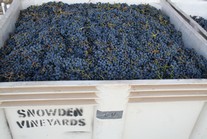 particularly when you take into account this year’s crop being about 25% lighter than last year’s. While there was less of it, we definitely liked the fruit. One interesting thing was the acids holding up as the grapes matured, even though we were hit with some major heat spikes in the two weeks running up to harvest – the acids holding up is promising for wine quality. All of the wines have fermented dry and, for the first time in several years, Diana was able to make the major blends as the wines were barreled down – so, instead of barrel aging as blending components, the 2015s will have their entire life in barrel to marry. We’re now going flat out to put the vineyards to bed for the winter – more on that soon.
particularly when you take into account this year’s crop being about 25% lighter than last year’s. While there was less of it, we definitely liked the fruit. One interesting thing was the acids holding up as the grapes matured, even though we were hit with some major heat spikes in the two weeks running up to harvest – the acids holding up is promising for wine quality. All of the wines have fermented dry and, for the first time in several years, Diana was able to make the major blends as the wines were barreled down – so, instead of barrel aging as blending components, the 2015s will have their entire life in barrel to marry. We’re now going flat out to put the vineyards to bed for the winter – more on that soon.
 Scott -- September 3, 2015
Scott -- September 3, 2015
2015 Harvest is Underway
Our harvest got started on August 24, when the Malbec came in. This would be early except we have decided to make a rosé. With just three tenths of an acre, this will be a wine for the family and interested 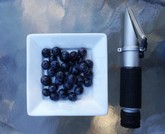 members of our mailing list -- one of the great pleasures of wine growing is occasionally trying something completely different. The Sauvignon Blanc was picked on August 26 – one day earlier than we picked in 2014. So, the dramatic talk about harvest coming much sooner this year turns out not to be the case, at least for our site. Budbreak, bloom and set were indeed significantly earlier than last year, but it looks like the grapes have matured more slowly and will be coming in around the same time as in 2014. This means we’ll have longer time on the vine, combined with moderate sugar levels, raising the possibility of high quality for producers who are looking for balanced wines driven by terroir and vintage. But these are still early days -- we're testing each of the 15 vineyard blocks remaining to be harvested every two or three days. At this writing, it looks like our next pick will be next Tuesday the 8th.
members of our mailing list -- one of the great pleasures of wine growing is occasionally trying something completely different. The Sauvignon Blanc was picked on August 26 – one day earlier than we picked in 2014. So, the dramatic talk about harvest coming much sooner this year turns out not to be the case, at least for our site. Budbreak, bloom and set were indeed significantly earlier than last year, but it looks like the grapes have matured more slowly and will be coming in around the same time as in 2014. This means we’ll have longer time on the vine, combined with moderate sugar levels, raising the possibility of high quality for producers who are looking for balanced wines driven by terroir and vintage. But these are still early days -- we're testing each of the 15 vineyard blocks remaining to be harvested every two or three days. At this writing, it looks like our next pick will be next Tuesday the 8th.
 Randy -- August 8, 2015
Randy -- August 8, 2015
Hawaii!
We’re delighted to report that Snowden wines are now becoming available in Hawaii. Like all important things, bringing wine to a new state starts with building relationships and our arrival in Hawaii is the culmination of several years of focused exploration and courtship. If you’d like to have our wines in your local wine shop or favorite restaurant, we would be grateful if you would tell them so. If they’re interested, they’ll say, “do you know who distributes them?” Then, if you live in Hawaii (or California, for that matter) you say, “let me think ... I believe it’s Chambers & Chambers.” The first wines to land have been the 2012 Snowden Cabernet Sauvignon “The Ranch” and the 2012 Snowden Merlot “Lost Vineyard.” Please let us know if they come to a shelf or winelist near you. In other news -- following up on Scott's last post, we met in the vineyard this morning and agreed it's time to start teh final fruit sort in the Cabernet Sauvignon blocks. We will probably remove about 10% of the total crop. The easiest way to describe it is to say, we only want the right number of uniformly-ripening clusters on the appropriate length growing shoots. Coming at it from the other side, we'll be removing second crop, clusters that haven't fully turned red, all clusters in excess of two per shoot, and clusters in excess of one if the shoot isn't at least 18 inches long with ten leaves or more. A little detailed, but by the time the grapes make it to the glass in a few years, vitally important.
 Scott -- August 4, 2015
Scott -- August 4, 2015
Time Is Flying
It's called "veraison" and refers to the moment a grape begins to turn pink and then red and then purple. 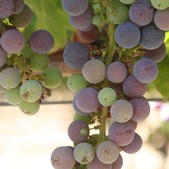 We have sixteen different blocks of vineyard -- at least from our perspective as farmers -- that make up our 23 planted acres, and they range from 40% to 98% veraited. The ideal is to have all the berries in each block turn at the same speed at the same time. This year is about the least synchronized veraison we've seen. But every year is farming and we often discover hidden benefits. The worst thing a grapegrower can do is assume that s/he knows everything. This year, we're definitely not doing the worst thing.
We have sixteen different blocks of vineyard -- at least from our perspective as farmers -- that make up our 23 planted acres, and they range from 40% to 98% veraited. The ideal is to have all the berries in each block turn at the same speed at the same time. This year is about the least synchronized veraison we've seen. But every year is farming and we often discover hidden benefits. The worst thing a grapegrower can do is assume that s/he knows everything. This year, we're definitely not doing the worst thing.
 Randy -- June 22, 2015
Randy -- June 22, 2015
And Now For Something Completely Different
Growing wine is a more diverse activity than meets the eye. While some of us spend most of our time in the vineyard, professional graphic designer Joann Ortega Snowden is busy designing, refining, and producing our labels, as she has since we first began making our own wines in 1993. The process is fascinatingly analogous to winemaking – a long tradition, an overarching quest for exactly the right expression, and a mind-numbing universe of interlocking detail. We would love to have our labels printed by someone in a leather apron screwing down on a wood press or lovingly feeding sheets into a cast iron impression printer. But for range and precision, it’s hard to beat the 100 foot long Austrian presses that imprint our labels using a dozen different plates in a single continuous press run. Last week Joann oversaw the printing of labels for our 2013 red wines and 2014 Sauvignon Blanc. Most of the wines will be released over the next six months. We hope you enjoy the labels as well as the wines.
mind-numbing universe of interlocking detail. We would love to have our labels printed by someone in a leather apron screwing down on a wood press or lovingly feeding sheets into a cast iron impression printer. But for range and precision, it’s hard to beat the 100 foot long Austrian presses that imprint our labels using a dozen different plates in a single continuous press run. Last week Joann oversaw the printing of labels for our 2013 red wines and 2014 Sauvignon Blanc. Most of the wines will be released over the next six months. We hope you enjoy the labels as well as the wines.
 Scott -- May 25, 2015
Scott -- May 25, 2015
Ready – Set!
Bloom finished up a couple of weeks ago, so now we can tell how successful the pollination process was 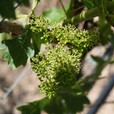 this spring – which means, how many grapes have “set.” For each grape position, if pollination didn’t occur, the tiny grape will just drop off the cluster when it’s shaken. In some years, half the potential berries disappear this way – it’s called “shatter.” In high-shatter years, it usually means a reduction in crop, but not by half because the remaining berries have more room and nourishment to get bigger. But that scenario means a lower ratio of skins to juice, which can result in less intense wines. This year’s set is remarkable: almost every berry position seems to have successfully pollinated – a higher and more uniform set than we’ve seen in years.
this spring – which means, how many grapes have “set.” For each grape position, if pollination didn’t occur, the tiny grape will just drop off the cluster when it’s shaken. In some years, half the potential berries disappear this way – it’s called “shatter.” In high-shatter years, it usually means a reduction in crop, but not by half because the remaining berries have more room and nourishment to get bigger. But that scenario means a lower ratio of skins to juice, which can result in less intense wines. This year’s set is remarkable: almost every berry position seems to have successfully pollinated – a higher and more uniform set than we’ve seen in years.
 Randy -- April 18, 2015
Randy -- April 18, 2015
Spring
Spring is rolling out smoothly so far. There was one very cold night last week, causing a little frost damage in the Sauvignon Blanc. All of our other vineyards are naturally protected by the ranch’s gentle slopes, which allow enough air flow to prevent frost from settling. New growth is to the point that shoot thinning is underway. Most healthy vines start more shoots than are needed, so “thinning” is removing the extra ones. Selecting the shoots is one of the most sensitive of the myriad decisions in the annual vine cycle. For cane  pruned vines, the first priority is to select the right shoots to become the cane arms next year. Then, it’s a matter of selecting the appropriate number of the best-positioned canes to produce this year’s crop. Right now we have no idea how big the crop will be – that will have to wait until after bloom, which is still a few weeks away. A glass of 2015 on the table is still way over the horizon.
pruned vines, the first priority is to select the right shoots to become the cane arms next year. Then, it’s a matter of selecting the appropriate number of the best-positioned canes to produce this year’s crop. Right now we have no idea how big the crop will be – that will have to wait until after bloom, which is still a few weeks away. A glass of 2015 on the table is still way over the horizon.
 Scott -- March 22, 2015
Scott -- March 22, 2015
Older Vintages Now Available Through Our Wine Library
This weekend marks the opening of Snowden Vineyards’ wine library, where our members will now have  access to a selection of meticulously cellared wines from older vintages. We are inaugurating the library with an offering of Cabernet Sauvignon in magnums from a dozen vintages ranging back two decades to 1995 – our third vintage producing our own wines and the vintage we began bottling our flagship wine in magnums. Library offerings will change from time to time – in future, look for larger format bottles, as well as small amounts of older wines in 750 mL bottles. To access the wine library, you must be a member of our email or postal mailing list and have created an account on our website. If you haven't joined a list yet, you can do so at any time by going to the website and clicking on "Sign-Ups" at the top of any page. And, all it takes to create an account is to click on "Log In" at the top of any pageand then click on "To sign up for an account." If you need any assistance, just email us at office@snowdenvineyards.com or contact us by phone at (707) 963-4292.
access to a selection of meticulously cellared wines from older vintages. We are inaugurating the library with an offering of Cabernet Sauvignon in magnums from a dozen vintages ranging back two decades to 1995 – our third vintage producing our own wines and the vintage we began bottling our flagship wine in magnums. Library offerings will change from time to time – in future, look for larger format bottles, as well as small amounts of older wines in 750 mL bottles. To access the wine library, you must be a member of our email or postal mailing list and have created an account on our website. If you haven't joined a list yet, you can do so at any time by going to the website and clicking on "Sign-Ups" at the top of any page. And, all it takes to create an account is to click on "Log In" at the top of any pageand then click on "To sign up for an account." If you need any assistance, just email us at office@snowdenvineyards.com or contact us by phone at (707) 963-4292.
 Randy -- March 14, 2015
Randy -- March 14, 2015
Let the Games Begin
Budbreak is underway -- about a week sooner than last year and two weeks sooner than in 2013. The Malbec block is already at 100% budbreak; the Cabernet Franc and Merlot are both around 15%; and the Cabernet Sauvignon and Sauvignon Blanc just have a few open buds -- mostly in the last position at the end of the newly tied-down canes. Until last year, winemaker Diana Snowden Seysses had been able to complete harvest in Burgundy before coming to California for our harvest. It looks like the harvests may overlap again this year. One tantalizing aspect of these early growing seasons -- they confound the usual thinking about hang time because they  allow phenolic ripening to more closely coincide with sugar ripening than if the vines had started later in the spring. In other words, there's the possibility of riper grapes at lower sugars and resulting alcohols. Stay tuned.
allow phenolic ripening to more closely coincide with sugar ripening than if the vines had started later in the spring. In other words, there's the possibility of riper grapes at lower sugars and resulting alcohols. Stay tuned.
 Scott -- March 1, 2015
Scott -- March 1, 2015
"Cabernet, quietly"
For one eminent wine writer’s perspective on what we’re doing, check out Jon Bonné’s article on our winemaker, Diana Snowden Seysses, and our wines in today’s San Francisco Chronicle. He walked the vineyards with us a couple of weeks ago and evidently sensed the long history that flows from our terroir into our wines. More creditably than we can do ourselves, he describes the ways that Diana’s primary vocation as a winemaker in Burgundy may be exerting a gravitational pull – qualitatively, stylistically – on our wines. Tasting the “light touch required in Burgundy,” Mr. Bonet writes that our wines reveal “layers of perfumed fruit and savory, often herbal flavors. What could be stiff tannins from the Rutherford hillside speak in a whisper,” the result of Diana’s “being so conversant with the subtleties of Burgundy.” Click here to read the article or go to http://www.sfchronicle.com/wine/thirst/article/A-Napa-family-finesses-Cabernet-with-Burgundy-in-6105992.php?t=429a6c88d6&cmpid=email-premium
 Randy -- February 28, 2015
Randy -- February 28, 2015
Hearing the Vines
It’s another early, early year, which means early pruning and a long frost season. Nothing in the 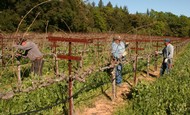 winegrowing process is more sensitive than pruning. Each vine is different. The first thing to figure out is, where on the vine will next year’s canes and fruit come from? Then, what about the vine’s vigor and development – is the vine out of its adolescence, fully healthy and capable of carrying a full crop? What is the vine spacing and how well did that specific part of the vineyard carry and mature its crop last season? With myriad variables in mind, the pruner will leave anywhere from two to forty buds on a vine. Rather than bringing in a large crew to prune quickly, our ranch manager Severiano Deloera prefers to work with just two or three highly experienced pruners who can consult with one another as they work. The photo was taken a few days ago in our Merlot block showing Seve in the middle, pruning with Rafael Maldonado on the left and Odilio E. Velazquez – these three vineyard professionals have done most of the pruning on the ranch for the past few years. Diana and I pruned with them last week in the Malbec block. At one point, Seve looked up from regarding the vine he was about to prune and said, “You just have to listen ... each vine wants to talk to you.”
winegrowing process is more sensitive than pruning. Each vine is different. The first thing to figure out is, where on the vine will next year’s canes and fruit come from? Then, what about the vine’s vigor and development – is the vine out of its adolescence, fully healthy and capable of carrying a full crop? What is the vine spacing and how well did that specific part of the vineyard carry and mature its crop last season? With myriad variables in mind, the pruner will leave anywhere from two to forty buds on a vine. Rather than bringing in a large crew to prune quickly, our ranch manager Severiano Deloera prefers to work with just two or three highly experienced pruners who can consult with one another as they work. The photo was taken a few days ago in our Merlot block showing Seve in the middle, pruning with Rafael Maldonado on the left and Odilio E. Velazquez – these three vineyard professionals have done most of the pruning on the ranch for the past few years. Diana and I pruned with them last week in the Malbec block. At one point, Seve looked up from regarding the vine he was about to prune and said, “You just have to listen ... each vine wants to talk to you.”
 Scott -- February 22, 2015
Scott -- February 22, 2015
Snowden Premiere Lot Goes to "UnWined" of Virginia
Diana, Susanne and I had great fun at Premiere Napa Valley yesterday. It's such a unique event and an opportunity to connect directly with clients from around the nation, to hear feedback from them and give them the latest update on what we're doing in the vineyards and cellars. We especially want to thank the winning bidders of our 100% Cabernet Franc 2013 lot, Vanessa and Warner Moore of the wine shops 'UnWined' in Alexandria, Virginia. We have family history and connections in Virginia, so we're delighted to have them take our lot home!
 Diana -- February 20, 2015
Diana -- February 20, 2015
Premiere Napa Valley
It feels like every wine professional is in town for Premiere Napa Valley -- and so am I! For the 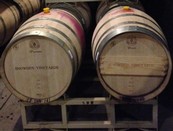 non-professionals, Premiere is an auction held once a year by the Napa Valley Vintners, our trade association that raises so much money for local charities. Wineries submit a unique wine that does not get sold through distribution. Please come by our stand -- I'll be pouring our 2013 Cabernet Franc with my father Scott and sister Susanne. We would love to say hello.
non-professionals, Premiere is an auction held once a year by the Napa Valley Vintners, our trade association that raises so much money for local charities. Wineries submit a unique wine that does not get sold through distribution. Please come by our stand -- I'll be pouring our 2013 Cabernet Franc with my father Scott and sister Susanne. We would love to say hello.
 Scott -- January 30, 2015
Scott -- January 30, 2015
Happy New Year!
And so we begin. This year the cover crop is thriving – a great improvement over last year when we 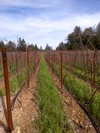 seeded twice but the weather was never right for germination and growth. Nice fall rain and reasonable temperatures have made a big difference for 2015. Why is the cover crop important? “Place-based” wines start with what Diana calls “living healthy soils.” We’re doing everything we can to create that essential foundation for our wines – we don’t use Roundup or other chemical herbicides, we don’t till once a vineyard is established, instead promoting a natural balance of beneficial soil organisms and insects. Pruning starts this week in the Los Ricos and Lower Vineyards.
seeded twice but the weather was never right for germination and growth. Nice fall rain and reasonable temperatures have made a big difference for 2015. Why is the cover crop important? “Place-based” wines start with what Diana calls “living healthy soils.” We’re doing everything we can to create that essential foundation for our wines – we don’t use Roundup or other chemical herbicides, we don’t till once a vineyard is established, instead promoting a natural balance of beneficial soil organisms and insects. Pruning starts this week in the Los Ricos and Lower Vineyards.
2014
 Randy -- November 21, 2014
Randy -- November 21, 2014
The Quiet Post-Harvest Season ... Well, Not Exactly.
There isn’t a busier time in the wine growing year than the couple of months following harvest. Diana is cajoling the new wines through yeast fermentation, malolactic fermentation, first racking, and into barrels. She's also fine-tuning the blends for last year's wines. The new releases are going out to customers and distributors. Ranch manager Severiano Deloera is putting the vineyards 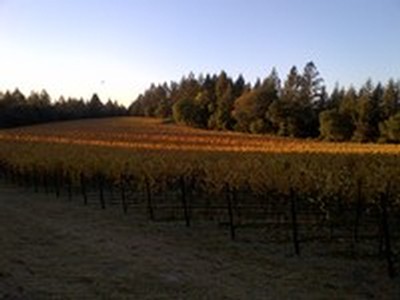 to bed for winter with biodynamic compost, cover crops, and a layer of straw to soften the impact of the rains we’ve all been hoping for -- and which have in fact quietly begun. We’ve been walking the vineyards and inspecting each vine, identifying some as sources for future grafting wood, marking some for removal and replacement. Looking at the vines takes time – in our Brothers Vineyard alone there are 22,000 vines in 17 miles of vine row. But the vines tell us so much at this time of year.
to bed for winter with biodynamic compost, cover crops, and a layer of straw to soften the impact of the rains we’ve all been hoping for -- and which have in fact quietly begun. We’ve been walking the vineyards and inspecting each vine, identifying some as sources for future grafting wood, marking some for removal and replacement. Looking at the vines takes time – in our Brothers Vineyard alone there are 22,000 vines in 17 miles of vine row. But the vines tell us so much at this time of year.
 Diana -- October 16, 2014
Diana -- October 16, 2014
2014 Vintage.
As I look back, there are inevitably some tough seasons where you chase after nature at every step. After those harvests you feel you’ve aged 5 years over six months and you live with uncertainty until bottling. Then 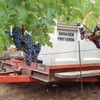 there are vintages where everything just happens naturally and easily. 2014 was easy. The grapes enjoyed a drawn-out, cool growing season. They were in perfect condition at the time of picking; ripe, healthy, delicious. We watched the grapes come in and felt energized and excited to see the beautiful, bountiful fruit from the Brothers Vineyard that has been a decade of thoughtful planning and hard work in the making. We were overjoyed to see the Ricos’ fruit, with its smallish clusters and lovely waxy bloom. As I watched the fruit move over the sorting table and into the tank, I appreciated and celebrated the auspicious beginning mother nature has given us this year. The wines are now in barrel and I feel confident about the 2014s.
there are vintages where everything just happens naturally and easily. 2014 was easy. The grapes enjoyed a drawn-out, cool growing season. They were in perfect condition at the time of picking; ripe, healthy, delicious. We watched the grapes come in and felt energized and excited to see the beautiful, bountiful fruit from the Brothers Vineyard that has been a decade of thoughtful planning and hard work in the making. We were overjoyed to see the Ricos’ fruit, with its smallish clusters and lovely waxy bloom. As I watched the fruit move over the sorting table and into the tank, I appreciated and celebrated the auspicious beginning mother nature has given us this year. The wines are now in barrel and I feel confident about the 2014s.
 Randy -- October 13, 2014
Randy -- October 13, 2014
Japan.
Our friend Yuri Iiyama, wine writer, educator, and television personality, recently visited the ranch with her son, rock guitarist Masashi Iiyama. Yuri has been to the ranch many times – and a number of years ago did  us the honor of introducing Snowden wines to Japan, at the time our first international market. (Today we export to Japan, England, Norway, and Sweden.) We’re crossing our fingers for Yuri and her family – and all of our other friends and colleagues in Japan – as Typhoon Vongfong makes its way ashore there.
us the honor of introducing Snowden wines to Japan, at the time our first international market. (Today we export to Japan, England, Norway, and Sweden.) We’re crossing our fingers for Yuri and her family – and all of our other friends and colleagues in Japan – as Typhoon Vongfong makes its way ashore there.
 Scott -- October 10, 2014
Scott -- October 10, 2014
The Once and Future Style.
From time to time, we’re approached by people who want to talk about the “style” of Napa Valley Cabernet Sauvignons. These conversations mainly imply, “Why don’t you heavily extract your wines and leave residual sugar? Your wines would be more uniform and you’d get higher ratings.” Both definitely true, but the answer is simple. We’re not chasing style – we’re chasing terroir and vintage. Some vintages, our unique site gives us huge wines with a lot of fruit and body; other years we’re given more delicate wines with less heft but more focus and finesse. We could engineer the latter to be more like the former – but it’s difficult to taste terroir behind forced extraction, let alone residual sugar. So we don’t. We make wines the way we like them, which means, how they’re given to us each vintage. We like huge, fruit-forward Napa Valley Cabernets, but we also like the patrician, restrained, long-lived wines that cooler vintages give us. If huge wines are all you like, this probably won’t make sense. But there are a lot of us – particularly in the generations coming up – who believe terroir and vintage trump extraction and sugar.
 Randy -- September 23, 2014
Randy -- September 23, 2014
Harvest Completes.
Our harvest is done – this one intense and lovely. It began August 25 with the Sauvignon Blanc and finished September 20, when we brought in the Cabernet Sauvignon from the Lost Orchard Vineyard and the Petit 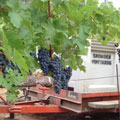 Verdot from the Levi Philander Davis block. The harvest dates were early, but so was spring bloom – on average, there were about 130 days from high bloom to harvest. This compares to approximately 110 days in Bordeaux (where the days are longer during the summer because of the higher latitude). Every wine starts perfect in the winter before its grapes set – from there on, the only change can be downhill. So far, 2014 is perfect.
Verdot from the Levi Philander Davis block. The harvest dates were early, but so was spring bloom – on average, there were about 130 days from high bloom to harvest. This compares to approximately 110 days in Bordeaux (where the days are longer during the summer because of the higher latitude). Every wine starts perfect in the winter before its grapes set – from there on, the only change can be downhill. So far, 2014 is perfect.
 Diana -- August 27, 2014
Diana -- August 27, 2014
Harvest Begins.
2014 harvest got underway with our Sauvignon Blanc coming in on Monday the 25th of August. We were so  lucky Fantesca, the facility where we ferment and barrel age, was not damaged by the earthquake the day before, and that we were able to pick our grapes at optimum ripeness, a beautiful 22.7 brix, right on my Sauvignon Blanc sweet spot.
lucky Fantesca, the facility where we ferment and barrel age, was not damaged by the earthquake the day before, and that we were able to pick our grapes at optimum ripeness, a beautiful 22.7 brix, right on my Sauvignon Blanc sweet spot.
 Randy -- August 25, 2014
Randy -- August 25, 2014
Earthquake Report.
We’re all safe – family, staff, and other friends. We all had a lot of things break, but for the most part we were very fortunate not to have any damage that couldn’t be cleaned up with a broom, shovel, and mop.  The exception was Susanne and her husband Matt, who live on the west side of town and lost just about everything in their house that was breakable. The ranch was not harmed. We lost no wine in barrel or bottle, other than in our home cellars. Thanks to everyone who has checked in over the past several days.
The exception was Susanne and her husband Matt, who live on the west side of town and lost just about everything in their house that was breakable. The ranch was not harmed. We lost no wine in barrel or bottle, other than in our home cellars. Thanks to everyone who has checked in over the past several days.
 Scott -- August 7, 2014
Scott -- August 7, 2014
"The Return of Cabernet -- California's great wine shows its classic lines."
Jon Bonné’s fascinating article in the San Francisco Chronicle on Sunday, August 3, traces the stylistic journey of Napa Valley Cabernet Sauvignon from the original legends, to the brilliant come-out wines of the 1970s, to austerity in the early 1980s, to the more extracted wines of the 1990s and oughts. “After a long identity crisis, California Cabernet is becoming Cabernet again,” Bonné writes. We’re delighted to find ourselves among the producers Bonné describes as “Making wines that reflect the traditional spirit of California Cabernet.” We’re in a sub-category he calls “ripe but balanced” – along with such distinguished company as Continuum, Dominus, Forman, Kongsgaard, Saddleback, and Spottswoode. If you asked us whether our winemaker (Diana is quoted in the article) sets out to make a “traditional” Cabernet Sauvignon, we would say no – she sets out to faithfully deliver the variety, our site, and the vintage into the glass. But that's of course the same thing.
 Randy -- July 18, 2014
Randy -- July 18, 2014
High Veraison.
The clusters are well on the way to turning red -- continuing their march toward what looks like a very 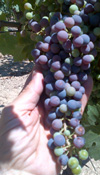 early harvest. The darker berries have already reached the point you can taste them without getting an acid shock. Our farming priority has shifted to strategies allowing the grapes to stay on the vine longer without letting the sugar levels get too high. The challenge: the one sure tool -- liberal irrigation -- is off the table because it can lead to diluted, vegetal tasting grapes. We're left with careful tending of the crop level and canopy. We'll keep you posted.
early harvest. The darker berries have already reached the point you can taste them without getting an acid shock. Our farming priority has shifted to strategies allowing the grapes to stay on the vine longer without letting the sugar levels get too high. The challenge: the one sure tool -- liberal irrigation -- is off the table because it can lead to diluted, vegetal tasting grapes. We're left with careful tending of the crop level and canopy. We'll keep you posted.
 Scott -- July 15, 2014
Scott -- July 15, 2014
Wines Available to Members.
One reason to become a member of our mailing list is access to certain wines on a pre-release basis. You'll see we've sold out of the 2010 Cabernet Sauvignon Reserve and the 2012 Sauvignon Blanc and the wines no longer appear on our "Wines" page. The next vintages -- the 2011 Cabernet Sauvignon Reserve and the 2013 Sauvignon Blanc -- are scheduled for general release on September 1. However, they are now available to members. Feel free to contact us at info@snowdenvineyards.com for information on how to access the wines and enjoy the 20% member discount.
 Randy -- July 5, 2014
Randy -- July 5, 2014
Red Grapes.
Talk about a fascinating growing year. We've had a remarkable run of warm days in the upper 80s into the lower 90s. Warm but, so far, none blistering hot and no long stretches in the upper 90s -- and, nights have been cool, which we like, because it keeps the train from getting up too much speed. The crop wants 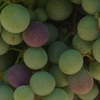 as much time on the vine as possible, so cooler evenings extend the ripening process without increasing sugar and hastening the harvest end point. Even so, hints of upcoming veraison are appearing in some of the blocks – the Malbec in particular.
as much time on the vine as possible, so cooler evenings extend the ripening process without increasing sugar and hastening the harvest end point. Even so, hints of upcoming veraison are appearing in some of the blocks – the Malbec in particular.
 Scott -- July 1, 2014
Scott -- July 1, 2014
2010 Reserve - Crush Wine & Spirits.
We’re sold out of the 2010 Cabernet Sauvignon Reserve from our end, but in some areas it is still working its way out thorough the wine shops and restaurants. If you’re a New Yorker looking for the wine, Crush Wine & Spirits is a wonderful store on E. 57th that still has the wine on hand and is featuring it at a very competitive price. Among other things, they say “the cool, vibrant profile brings minerality, finesse and a detailed edginess to the wine that makes it really, really impressive.” We agree – the 2010 is developing well in the bottle – more weight than the 2008, but like that vintage, distinguished by balance and purity in both mouth feel and aromatics. You can see Crush’s full write-up at http://www.crushwineco.com/current-specials/snowden-cabernet-reserve-2010/
Spirits is a wonderful store on E. 57th that still has the wine on hand and is featuring it at a very competitive price. Among other things, they say “the cool, vibrant profile brings minerality, finesse and a detailed edginess to the wine that makes it really, really impressive.” We agree – the 2010 is developing well in the bottle – more weight than the 2008, but like that vintage, distinguished by balance and purity in both mouth feel and aromatics. You can see Crush’s full write-up at http://www.crushwineco.com/current-specials/snowden-cabernet-reserve-2010/
 Diana -- June 17, 2014
Diana -- June 17, 2014
Sauvignon Blanc.
Our rare and racy Sauvignon Blanc 2013 will soon be released! More and more of you have taken the time to 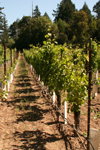 come visit our property. A highlight for visitors, as for us, is the 1 acre plot of Sauvignon Blanc in the middle of the vineyard we call The Lost Orchard. It is a small, somewhat unruly jewel. At about 800 feet, with the influence of Lake Hennessy at the bottom of the valley below, and growing on very little top soil, this wine has caught attention for its cut, length and mineral texture.
come visit our property. A highlight for visitors, as for us, is the 1 acre plot of Sauvignon Blanc in the middle of the vineyard we call The Lost Orchard. It is a small, somewhat unruly jewel. At about 800 feet, with the influence of Lake Hennessy at the bottom of the valley below, and growing on very little top soil, this wine has caught attention for its cut, length and mineral texture.
 Scott -- June 15, 2014
Scott -- June 15, 2014
Weather, weather everywhere...
California grapegrowers have been accused of describing every year as the best that’s ever been, with the result that you’ll notice many of us making a conscious effort not to say things like that. For starters, there is no such thing – some people like sleek, definitive, terroir-driven Cabernet Sauvignons and others prefer big, rich, fruit-forward ones – so it's the rare growing year that is perfect for every palate. But regardless of the side of the aisle you live on, thus far 2014 is unnervingly propitious. With the exception of four very hot days that appear to have done little harm, we so far have a lovely, sunny, moderately warm summer. Odds are, this will be swept away in the many weeks until harvest, but right now there is the possibility of a season that lets the grapes stay longer on the vine without sugars and resulting alcohols getting too high -- the rare year that pleases both sides of the aisle.
 Diana -- May 22, 2014
Diana -- May 22, 2014
Bottling.
The 2012 reds and 2013 Sauvignon Blanc are bottled. Bottling is a high-pressure milestone for a winemaker  and her wines; it is the last opportunity to adjust their trajectory. After 15 months of doing nothing, letting nature’s complexities develop under healthy conditions, pre bottling is the only time after fermentation where I act. Everything must be considered; free sulphur, carbon dioxide, turbidity, microbiological landscape, reduction … it is the opportunity do something to make sure a wine is just right. Preparing the wines for bottling is as intense as harvest, though not nearly as fun. But then the noisy day comes to an end and the winemaker’s job is done.
and her wines; it is the last opportunity to adjust their trajectory. After 15 months of doing nothing, letting nature’s complexities develop under healthy conditions, pre bottling is the only time after fermentation where I act. Everything must be considered; free sulphur, carbon dioxide, turbidity, microbiological landscape, reduction … it is the opportunity do something to make sure a wine is just right. Preparing the wines for bottling is as intense as harvest, though not nearly as fun. But then the noisy day comes to an end and the winemaker’s job is done.
 Randy -- May 12, 2014
Randy -- May 12, 2014
Bloom.
Bloom came on quickly, starting around May 1 in the older Cabernet Sauvignon blocks, then the new Brothers Vineyard, followed by the Merlot, Cabernet Franc, Petit Verdot, and Sauvignon Blanc. By May 6, you could  smell the perfume in many of the blocks, which meant bloom was well underway -- perhaps 40%. We're pleased it's been a relatively uniform and fast bloom -- a leisurely bloom that slowly moves through the vineyard can result in uneven ripening all the way to harvest, often requiring hand removal of the less mature fruit. It remains to be seen whether bloom was fast enough: around the 12th, daytime temperatures went up, which can cause "shatter" in berries that haven't yet been pollinated -- meaning, they don't develop into grapes. Weather is of course the big variable we're always tracking. So far, yes, we could have used more winter rain, and yes, we could have done without this week's heat, but overall, this spring has been glorious.
smell the perfume in many of the blocks, which meant bloom was well underway -- perhaps 40%. We're pleased it's been a relatively uniform and fast bloom -- a leisurely bloom that slowly moves through the vineyard can result in uneven ripening all the way to harvest, often requiring hand removal of the less mature fruit. It remains to be seen whether bloom was fast enough: around the 12th, daytime temperatures went up, which can cause "shatter" in berries that haven't yet been pollinated -- meaning, they don't develop into grapes. Weather is of course the big variable we're always tracking. So far, yes, we could have used more winter rain, and yes, we could have done without this week's heat, but overall, this spring has been glorious.
 Scott -- April 21, 2014
Scott -- April 21, 2014
Two clusters per shoot.
That's the general rule to keep the crop in balance with the canopy: two fruit clusters on each healthy shoot,  which are the new green canes growing out of the buds left from last year's new growth. Vines will sometimes propose more than two clusters -- which seems to be unusually common this year, particularly in our one acre Petit Verdot block (the "Levi Philander Davis Vineyard" block) where many shoots have put out three or even four potential clusters. We're still a long way from having grapes -- it's still frost season; and bloom, set, and the risk of shatter are all right around the corner. But it does look like there will be an extra "pass" through the vineyard -- that's when vineyard workers visit every vine, in this case to trim the extra clusters. This is a much better problem to have than not enough clusters, with all those risks still ahead.
which are the new green canes growing out of the buds left from last year's new growth. Vines will sometimes propose more than two clusters -- which seems to be unusually common this year, particularly in our one acre Petit Verdot block (the "Levi Philander Davis Vineyard" block) where many shoots have put out three or even four potential clusters. We're still a long way from having grapes -- it's still frost season; and bloom, set, and the risk of shatter are all right around the corner. But it does look like there will be an extra "pass" through the vineyard -- that's when vineyard workers visit every vine, in this case to trim the extra clusters. This is a much better problem to have than not enough clusters, with all those risks still ahead.
 Randy -- April 7, 2014
Randy -- April 7, 2014
Texas.
Every time any of us get to be in Texas, we're reminded how important it is to leave your spurs and your preconceptions on the porch. Last week I visited Dallas, Ft. Worth, and El Paso and was once again struck by how many people in Texas know and love fine wines. The larger Specs stores have remarkable wine collections and many have Snowden on the shelf – we've had more wine sales specialists from Specs visit the ranch than from any other state. In related news, we’re pleased that Cafe Central in El Paso is adding our Reserve, Merlot and a library reserve to their perceptive and comprehensive wine list.
 Scott -- March 25, 2014
Scott -- March 25, 2014
Our bi-continental winemaker.
The Daily Beast ran an item a few days ago where they said “the wine world is evolving. Tastes are changing, and a new generation of women is on the cutting edge of today’s vinous evolution.” Diana is among the featured winemakers and talks about her path from “cellar rat” to making wine in the Napa Valley and Burgundy. Describing her lofty status today, she says “I still spit. Sadly, I no longer roll barrels.” To see the article, you can go to http://www.thedailybeast.com/articles/2014/03/22/yes-women-can-make-great-wine.html
 Randy -- March 22, 2014
Randy -- March 22, 2014
Midway through budbreak -- and Iowa.
Budbreak -- when we pruned in the winter we removed most of the canes that had grown in 2013, leaving just enough of last year's growth to give us the right number of buds on each vine for new shoots to form this  year. That ranges from two to thirty buds, depending on the age, health, and circumstances of each vine. In late February, the first buds began to swell and turn fuzzy, then as they begin to burst, they look pink. The Petit Verdot was the first to show tiny leaves in the first week of March. By now, leaves are emerging in all of the blocks -- some are over an inch in diameter. There's more to this than meets the eye: last year budbreak was early but this year is over two weeks ahead of last year. In related news, we just received our license to ship wine to Iowa and the first direct shipments should be hitting the road this coming week.
year. That ranges from two to thirty buds, depending on the age, health, and circumstances of each vine. In late February, the first buds began to swell and turn fuzzy, then as they begin to burst, they look pink. The Petit Verdot was the first to show tiny leaves in the first week of March. By now, leaves are emerging in all of the blocks -- some are over an inch in diameter. There's more to this than meets the eye: last year budbreak was early but this year is over two weeks ahead of last year. In related news, we just received our license to ship wine to Iowa and the first direct shipments should be hitting the road this coming week.
 Diana -- March 1, 2014
Diana -- March 1, 2014
What a joy to see cover crop in the morning!
If only one could capture the sweet smell in the same way we capture  images in photos... These grasses will all be tilled in soon to decompose, giving back Nitrogen and other micronutrients for soil ecology and structure. These brave little sprouts are the foundation for “terroir transparency” in wine.
images in photos... These grasses will all be tilled in soon to decompose, giving back Nitrogen and other micronutrients for soil ecology and structure. These brave little sprouts are the foundation for “terroir transparency” in wine.
Randy -- February 25, 2014
Pruning is all but complete.
Like many Napa Valley grapegrowers, we are gradually returning to “cane pruning” –- more complex than “cordon training,” but allowing more nuanced control of the vines. The only blocks left to prune are the Petit Verdot and the Sauvignon Blanc – one acre each. Both are at tricky developmental stages, so our ranch manager, Severiano Deloera, will be pruning them himself this year.
 Diana -- February 10, 2014
Diana -- February 10, 2014
2013 -- malos are finished, time to blend.
I love the 2013s! What a relief. When you pick grapes on the early side, before they have metabolized all of their malic acid, it’s impossible to judge what you’ve got until after malolactic fermentation. The acidity exaggerates the tannin, plus the carbon dioxide … you pretty much have to just drive in the bung and let nature and time work their magic.
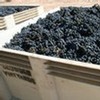 I made it back to the valley from France in December, a week after the last lot finished malo, to find the wines teeming with energy. They were bright, crunchy, had great length, Californian suppleness with edgy character and ample definition to hold your attention.
I made it back to the valley from France in December, a week after the last lot finished malo, to find the wines teeming with energy. They were bright, crunchy, had great length, Californian suppleness with edgy character and ample definition to hold your attention.
It was unnerving to bring in Cabernet in the first half of September this year when so many people were extolling extra hang time, but I couldn’t be more pleased with the results.
Later this month we’ll resume trials and continue exploring where we're going with these strong blending components.
 Randy -- February 7, 2014
Randy -- February 7, 2014
Rain has finally come.
Just one storm so far, but enough to completely change the outlook for the 2014 growing season. This year was the first since the family came to the property in 1955 that we've had to irrigate through the winter. Now we can turn off the water and let nature do its work. The roots stay active year-round, so with this rain they will be able to develop in the areas not directly under a drip emitter. The cover crops can grow. The microscopic critters that live in the soil and in the cover crops -- which are essential to field health and, ultimately, wine quality -- can thrive. Every year is a succession of events, beneficial or challenging, that cumulatively inform the wines. One challenge met. On to pruning.